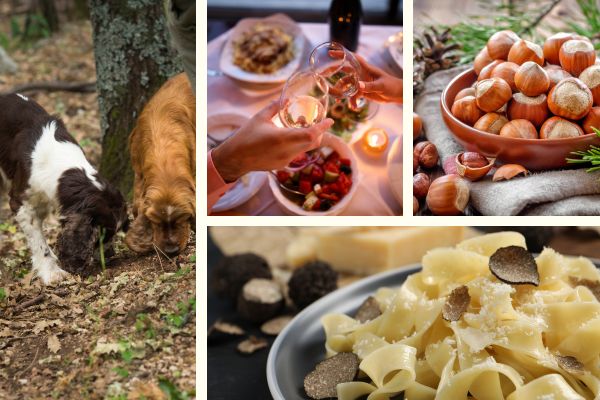Who is the Barbaresco tasting aimed at?
The characteristics of Barbaresco are a structured wine with a distinctive color of a rich, full, ripe red, intense and pleasant to the nose. The intensity of its flavor and aroma does not reach the levels of Barolo, but, in some ways, makes it an even more pleasant and “easy” wine to enjoy. It appeals to a more coveted audience of wine lovers. Both those whose palates are already accustomed to important tastes and those who prefer less full-bodied and intense wines. They will tell you that you will taste rose and violet-like aromas, and then wild strawberries and cherries in the flavor. It’s worth trying!
How many Barbaresco producers are there?
The Barbaresco production area is relatively small. The area around Alba comprises four municipalities: Barbaresco, Neive, Treiso, and San Rocco, as well as approximately 700 hectares of Nebbiolo vineyards. Producers fall into two categories: those who give their production (in part or whole) to the Cantina dei Produttori di Barbaresco and those who sell directly. There are over 100 producers, and they characterize their products according to CRUs. They are called crù, the appellations based on the vineyard and location.
What are the production areas of Barolo?
We find the first Barolo appellation since the mid-19th century. And it is precisely in Barolo that we see it. We are located in Piedmont, specifically in the province of Cuneo. The DOCG is given to the production of the following communes: Barolo, La Morra, Monforte, Serralunga d’Alba, Castiglione Falletto, Novello, Grinzane Cavour, Verduno, Diano d’Alba, Cherasco, and Roddi. For some communes, however, not all vineyards are accepted as Barolo. Your weekend in Barolo and Barbaresco will let you discover many enchanting corners!
What are the similarities between Barolo and Barbaresco?
Sono due DOCG piemontesi. Definiti nello stesso anno, il 1980. Sono due bei vini rossi. Sono entrambi derivati, al 100%, da uve Nebbiolo. Sono coltivati entrambi in una zona molto vicina, nel basso Piemonte, nelle Langhe.
What are the differences between Barolo and Barbaresco?
First of all, the soil that hosts them. Barolo is found in limestone and tuff with many minerals in the subsoil, which are then felt overbearingly in the glass. Barbaresco lives and thrives among sandier soils, and so here is a wine that is full and firm but more velvety, soft, pleasant, and elegant.








